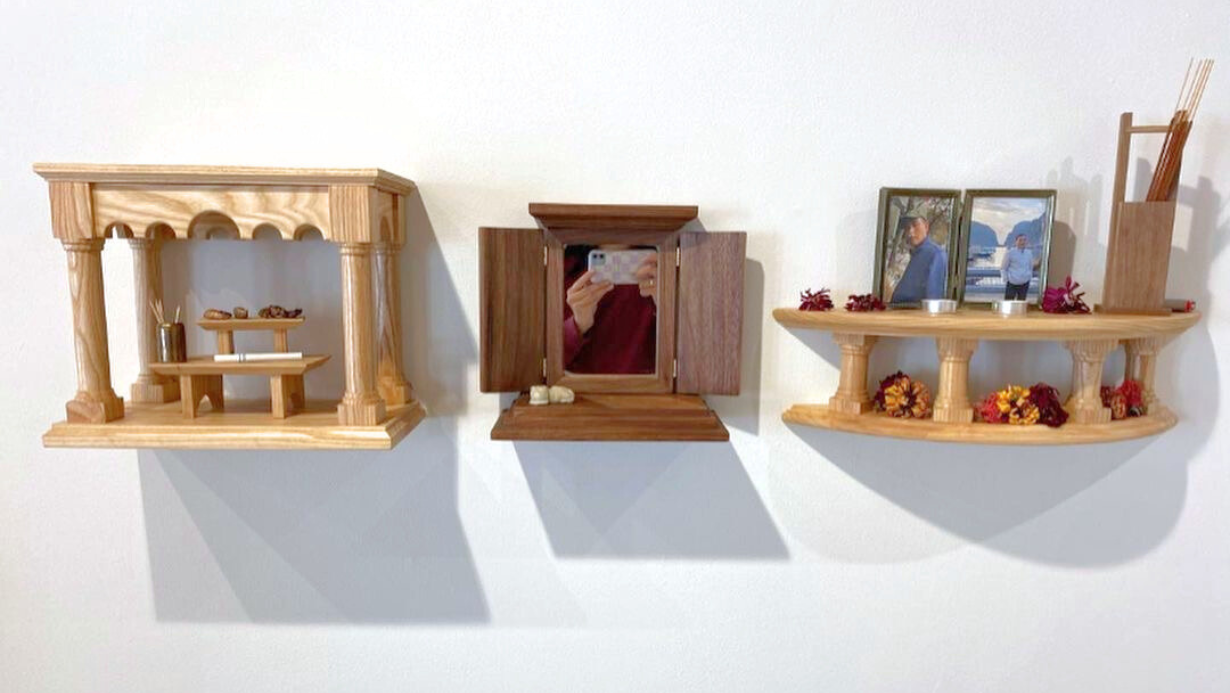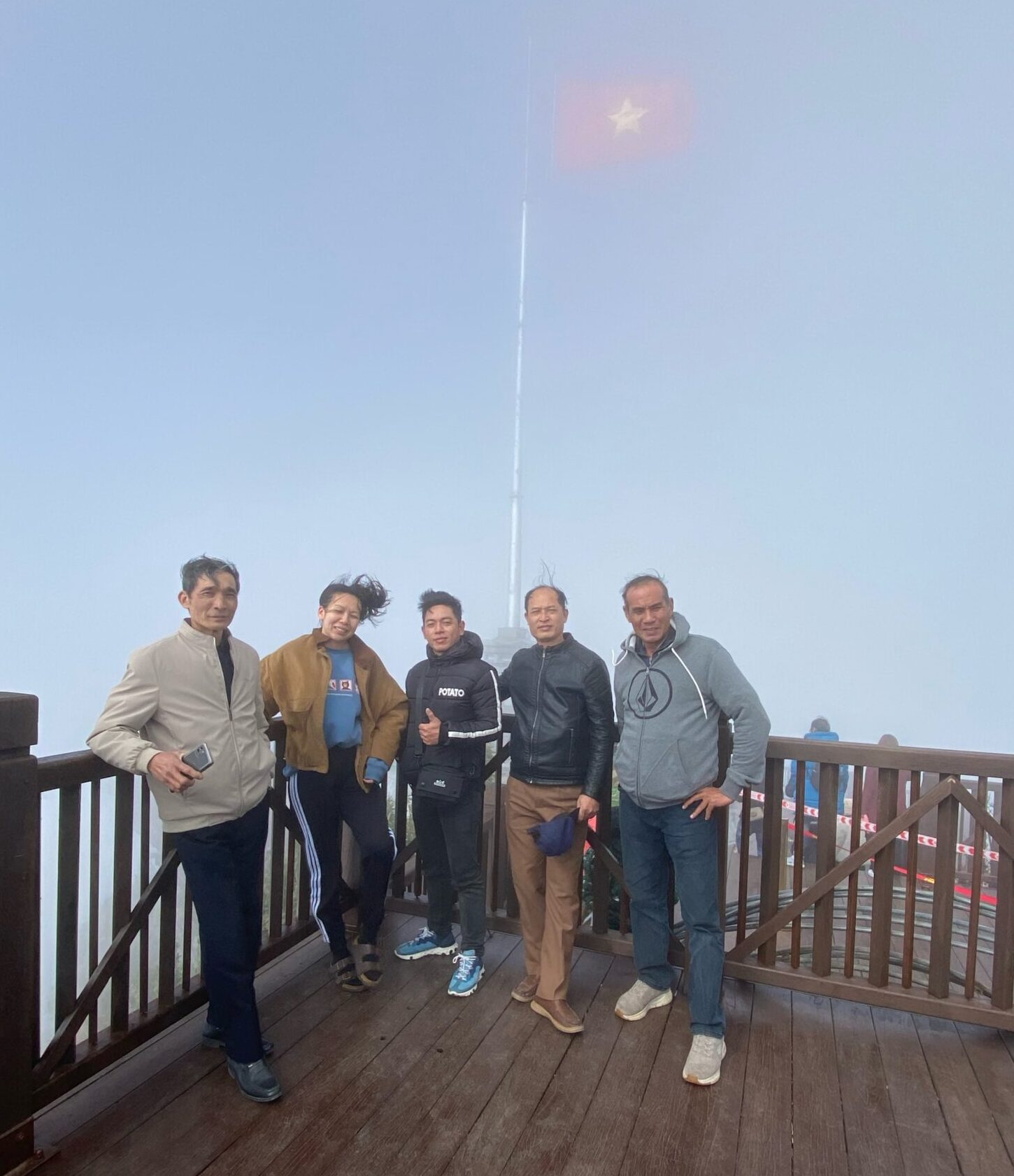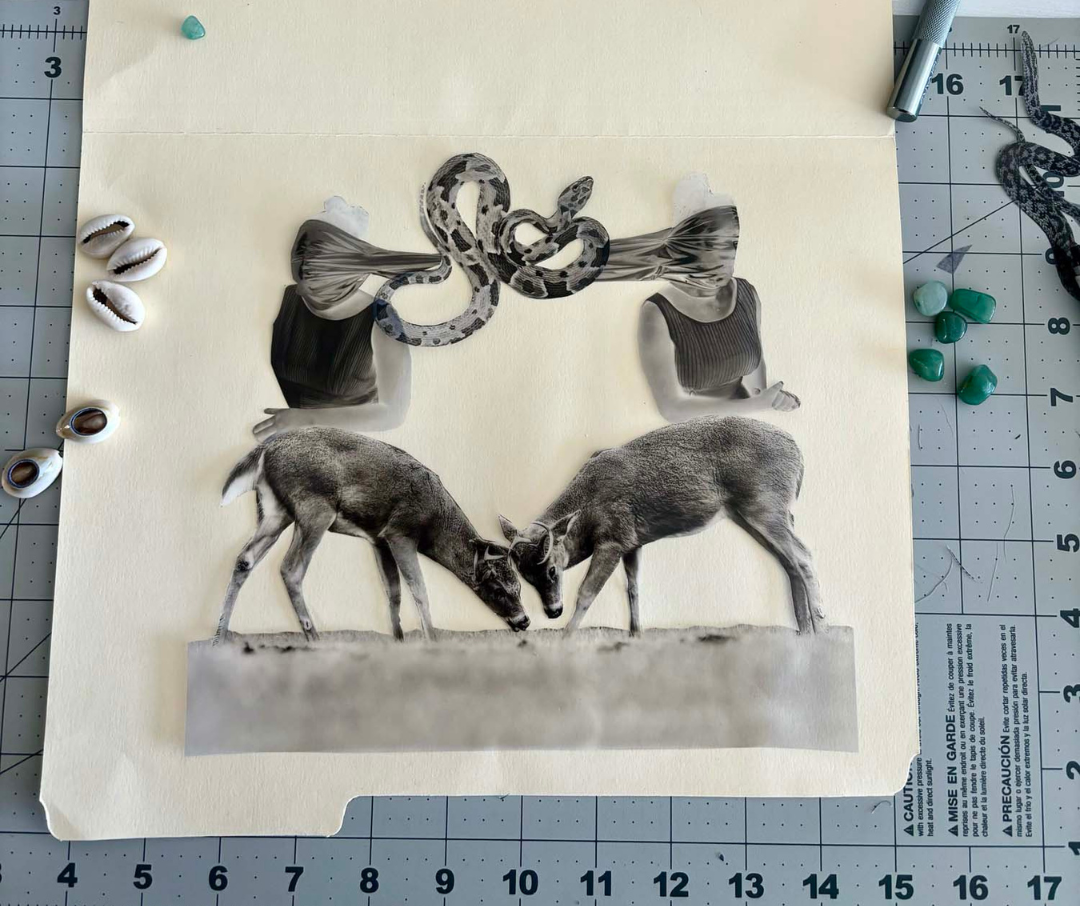 Kendall Ross with her work in the Penland textiles studio.
Kendall Ross with her work in the Penland textiles studio.
Penland Winter Resident Kendall Ross‘s art sweaters have won the hearts of curators, art-lovers, and the internet. Known for her bright colors, mind-bending color work, and confessional style, Kendall makes her creative home in her native Oklahoma City where she is a full time studio artist. At Penland, we were charmed by the quickness and ease with which Kendall seems to bring her work into being . We were also honored to host Kendall for her first artist residency. “I was so inspired by the talent of the other artists I was working around and the support of the Penland staff,” she said. “I feel like I’ve formed so many new and important connections in my life with new friends and artists.”
Kendall completed quite a bit of work while here at Penland. One finished piece was a two-headed sweater about her relationship to her creative practice that she encouraged us to try on at show and tell.
We took the opportunity to interview Kendall about her two-headed sweater. Please enjoy!
 Kendall uses “StitchFiddle” to plan out her designs
Kendall uses “StitchFiddle” to plan out her designs
INTERVIEW WITH KENDALL ROSS
What inspired the two-headed sweater?
Right now, I am inspired by the idea of making pieces about the relationship I have with my work and artistic process. When I’m writing text though, I love to use language that could be taken in so many different ways based on who is reading it. So for me, the two-headed sweater is about my relationship with people’s perception of my work, but someone else could think it’s about a bad relationship.
I wanted to put two different sweaters into one piece because the way I feel about the creative process is essentially two sides of the same coin. I’ve spent a lot of time over the last few years trying so hard to be taken seriously or be seen as a real artist, but at the end of the day, it shouldn’t matter what anyone else thinks because the work and the process of creating is ultimately mine. For me, though, there is no way to get rid of the fear of how people will see you and what you do, so even when you focus on the process for yourself you’re still carrying the fear and the baggage of perception and expectation with you.
Also- truthfully, I just thought it would be so funny to make a two-headed sweater and I wanted to see if I could do it successfully, haha. I loved watching people try it on at Show and Tell.
 Trying on the two-headed sweater at show and tell
Trying on the two-headed sweater at show and tell
For us craft nerds: How did you make it?
I hand-knit each piece using a combination of intarsia and stranded (fair-isle) colorwork. I spend a lot of time charting out and designing each piece using software called “StitchFiddle,” which is essentially digital graph paper where I can notate where I need to change colors when I’m knitting.
I knit this piece in six pieces. I started by knitting the front left, front right, back left, and back right panels. I seamed all of those together and knit both sleeves in the round. The last thing I did was pick up and knit stitches around the neckline to make the folded collars and wove in all the ends.

How long did it take you to knit the two-headed sweater?
I started this piece on the first Saturday of the residency. At that point, I was working to knit up the back panel of the big vest I made, which is mostly one color. I can’t work on something simple for too long before I get antsy, so I designed the chart and started knitting the black and white half of it before I finished the vest.
Most of the piece was made during the second week of the residency after I finished the vest. I was determined to complete the two-headed sweater because I wanted to have a piece that was made entirely during my time at the residency. I was working on finishing the second sleeve the morning of the last day so it would be ready for people to try on at Show and Tell.

What was your two-week Penland Winter Residency like?
I could probably talk about this for hours, but it was literally incredible. I don’t have an art school background, and I had never done a residency before so I had no expectations of what the Penland Winter Residency would look like. I was so inspired by the talent of the other artists I was working around and the support of the Penland staff. I feel like I’ve formed so many new and important connections in my life with new friends and artists.
I am in a unique situation compared to other artists because knitting is so portable, so it’s not like I needed to do a residency to have access to specific facilities like a kiln. However, the time and space to focus on my work outside of my day-to-day environment was so impactful and pushed me to create work that is different than what I normally create. I could say so many good things about my time at Penland, and I’m excited to return someday!

Is knitting your full-time job? What’s next?
Yes! I knit full-time! I have a lot of exciting things lined up for this year, including a solo show at the Pacific Northwest Quilt and Fiber Art Museum that opens in August.
During my time at Penland, I started thinking about ways I could shift my practice to create work that is bigger and less wearable than what I usually create. I’m excited to make new exciting and weird things in the future!

Thank you for sharing your practice, Kendall!



 Lisa Nguyen and family members
Lisa Nguyen and family members 


 Lisa Nguyen, 2022-2023 Penland Core Fellow
Lisa Nguyen, 2022-2023 Penland Core Fellow Work by Nydia Blas, finished at Penland
Work by Nydia Blas, finished at Penland Digital negatives used in Nydia’s work
Digital negatives used in Nydia’s work




 Nydia Blas
Nydia Blas